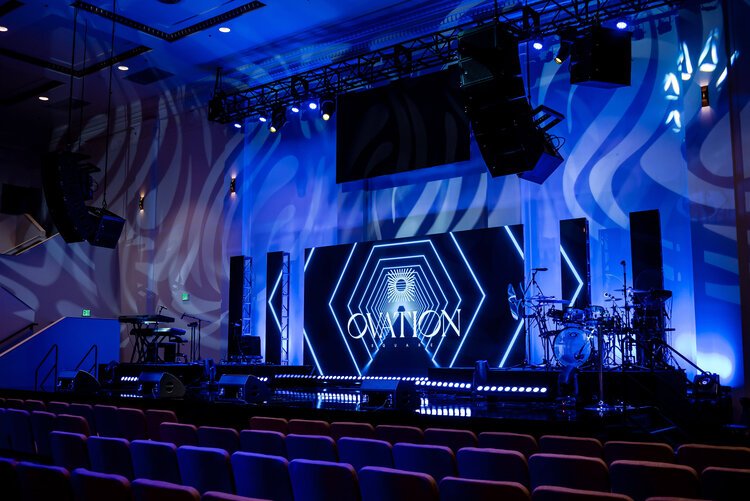Explore Your Event Source Charlotte for Exceptional Event Rentals.
Explore Your Event Source Charlotte for Exceptional Event Rentals.
Blog Article
Why Occasion Source Solutions Are Essential for Seamless Event-Driven Styles
In the world of modern software application development, event-driven designs are significantly prevalent, yet their efficiency pivots on the implementation of durable event resource solutions. As markets change towards real-time data handling, understanding the ramifications of occasion sourcing becomes crucial.
Recognizing Event-Driven Styles
Event-driven architectures (EDAs) represent a standard shift in creating software program systems, where the circulation of details is determined by the incident of occasions. This architectural style advertises a decoupled strategy, enabling various elements to interact asynchronously. In EDAs, occasions work as the main means of interaction, causing processes or workflows in action to details occurrences, such as individual actions or system modifications.
The trick parts of an EDA include event manufacturers, which generate events; event customers, which react to events; and occasion channels, which promote the transmission of occasions between manufacturers and customers. This structure enhances system responsiveness and scalability, as components can individually refine occasions without the need for simultaneous interaction.
Moreover, EDAs make it possible for real-time data processing, making them suitable for applications calling for instant understandings-- such as fraud detection in financial systems or checking IoT tools. They likewise sustain an even more dexterous growth environment, permitting teams to repeat swiftly and release brand-new functions with very little disturbance to existing solutions.
The Function of Occasion Resource Solutions
While different parts in an event-driven style rely on reliable interaction, event source solutions play an essential function in generating and taking care of the flow of events. These services function as the initial factor of occasion development, capturing changes in state or individual activities and converting them into events that can be circulated through the system.

In addition, they facilitate the decoupling of manufacturers and consumers within a design, allowing systems to range independently. This decoupling is crucial for enhancing system strength, as it minimizes dependencies that might otherwise result in traffic jams or single factors of failure.
Advantages of Real-Time Information Processing
Real-time information processing considerably boosts the abilities of event-driven architectures by enabling immediate insights and activities based upon the most up to date info (your event source you could look here charlotte). This immediacy not only increases decision-making yet also enhances the importance and accuracy of those choices. Organizations can react to occasions as they occur, lowering latency and enhancing functional agility
One of the key benefits of real-time information processing is the capacity to capture and assess information constantly. This promotes proactive actions as opposed to reactive actions, allowing organizations to prepare for fads and prospective problems before they escalate. In fields such as finance or e-commerce, real-time analytics can determine fraudulent purchases or consumer habits changes, permitting quick treatments that minimize threat and enhance customer satisfaction.

Inevitably, the integration of real-time information handling right into event-driven architectures empowers organizations to harness the complete potential of their data, driving development and competitive benefit in a significantly dynamic industry.
Enhancing System Communication
Effective communication in between systems is critical for the success of any kind of event-driven style. Occasion source solutions promote this communication by offering a robust structure for catching read and transmitting occasions in genuine time. By systematizing exactly how systems generate and eat occasions, these services remove uncertainty and foster interoperability, allowing inconsonant systems to collaborate effortlessly.
Using event streams makes it possible for systems to react promptly to modifications, making sure that all components are straightened and informed. This responsiveness is essential in atmospheres where timely data exchange straight impacts decision-making and general system performance. Additionally, event resource options offer systems for event filtering, change, and routing, boosting the efficiency of information circulation between systems.
Furthermore, by carrying out a publish-subscribe model, event source remedies decouple system components, enabling for higher flexibility and scalability. This decoupling indicates that systems can advance independently, making it much easier to incorporate brand-new capabilities or change existing parts without disrupting general interaction.
Future Fads in Event Sourcing

Another substantial trend is the surge of cloud-native occasion sourcing options. These platforms leverage the scalability and flexibility of cloud facilities, allowing companies to effectively take care of and keep vast quantities of occasion data without the expenses of conventional systems. This change promotes higher availability and collaboration across groups.
Additionally, the adoption of microservices design is influencing occasion sourcing practices. As services increasingly section their applications into smaller sized, independent services, occasion sourcing provides a robust system to keep information consistency and honesty across these distributed systems.
Verdict
In conclusion, event resource solutions function as a crucial structure for smooth event-driven architectures, making it possible for effective occasion generation and monitoring. By facilitating asynchronous communication in between elements, these remedies enhance system durability and advertise the independent advancement of solutions. The benefits of real-time data processing and enhanced system communication emphasize the relevance of embracing occasion sourcing techniques. As the demand for robust distributed systems boosts, learn this here now the relevance of occasion source solutions will continue to expand, forming the future of event-driven design.
Report this page